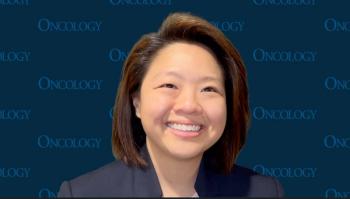
Gaps Found in Monitoring of Response to TKI Therapy in CML
A new study found significant gaps in the monitoring of responses to tyrosine kinase inhibitor therapy in patients with chronic myeloid leukemia. Patients are more likely to be monitored in Europe, at academic centers, and if they are younger than 65.
A new study found significant gaps in the monitoring of responses to tyrosine kinase inhibitor (TKI) therapy in patients with chronic myeloid leukemia (CML). Patients are more likely to be monitored in Europe, at academic centers, and if they are younger than 65.
“Once TKI therapy is initiated, careful monitoring of cytogenetic response (CyR) and molecular response (MR), using time-based ‘milestone’ testing, is necessary to ensure optimal outcomes,” wrote study authors led by Stuart L. Goldberg, MD, of the John Theurer Cancer Center at Hackensack University Medical Center in New Jersey. Both the European LeukemiaNet and the National Comprehensive Cancer Network recommend response assessments every 3 months during the first year of therapy.
To assess how well these guidelines are followed in practice, the SIMPLICITY trial followed 1,242 patients with CML in the chronic phase who were receiving either imatinib (416 patients), dasatinib (418 patients), or nilotinib (408 patients) in six European countries and the United States, from 2010 to 2015. The patients were followed for at least 12 months (median, 52.4 months); results were
In the full cohort, 36% were monitored for either CyR or MR by 3 months. By 6 months, the rate was 82%, and by 12 months, it was 95%. The median number of CyR and/or MR tests in the first 12 months of therapy was 5.
Monitoring was more frequent in Europe than in the United States. By 12 months, 99% of all CML patients had undergone some CyR/MR testing in Europe, compared to 94% in the United States (P < .001). Academic centers performed better than community practices: at 3 months, 40.1% of patients were tested at academic centers, compared with 31.3% at community practices. By 12 months, those rates were 97.3% and 93.4%, respectively (P = .001).
Multivariate analysis found several predictors of CyR/MR monitoring. By 12 months after TKI initiation, patients under 65 years of age had an odds ratio (OR) for monitoring of 2.05 (P = .013), and patients in Europe had an OR of 5.17 (P < .001). Patients who were no longer on first-line TKI therapy were also more likely to be monitored, with an OR of 2.27 (P = .049), as did patients who were followed at an academic center, with an OR of 1.90 (P = .037). Risk score status, the year of TKI initiation, and insurance status in the United States were not significant predictors of monitoring.
“In the absence of appropriate monitoring practices, clinical response to TKI therapy cannot be established, any needed changes to treatment strategy will thus not be implemented, and long-term patient outcomes are likely to be impacted,” the authors wrote. They will continue to follow patients in the study to determine any effect on long-term outcomes.
Newsletter
Stay up to date on recent advances in the multidisciplinary approach to cancer.


















































































